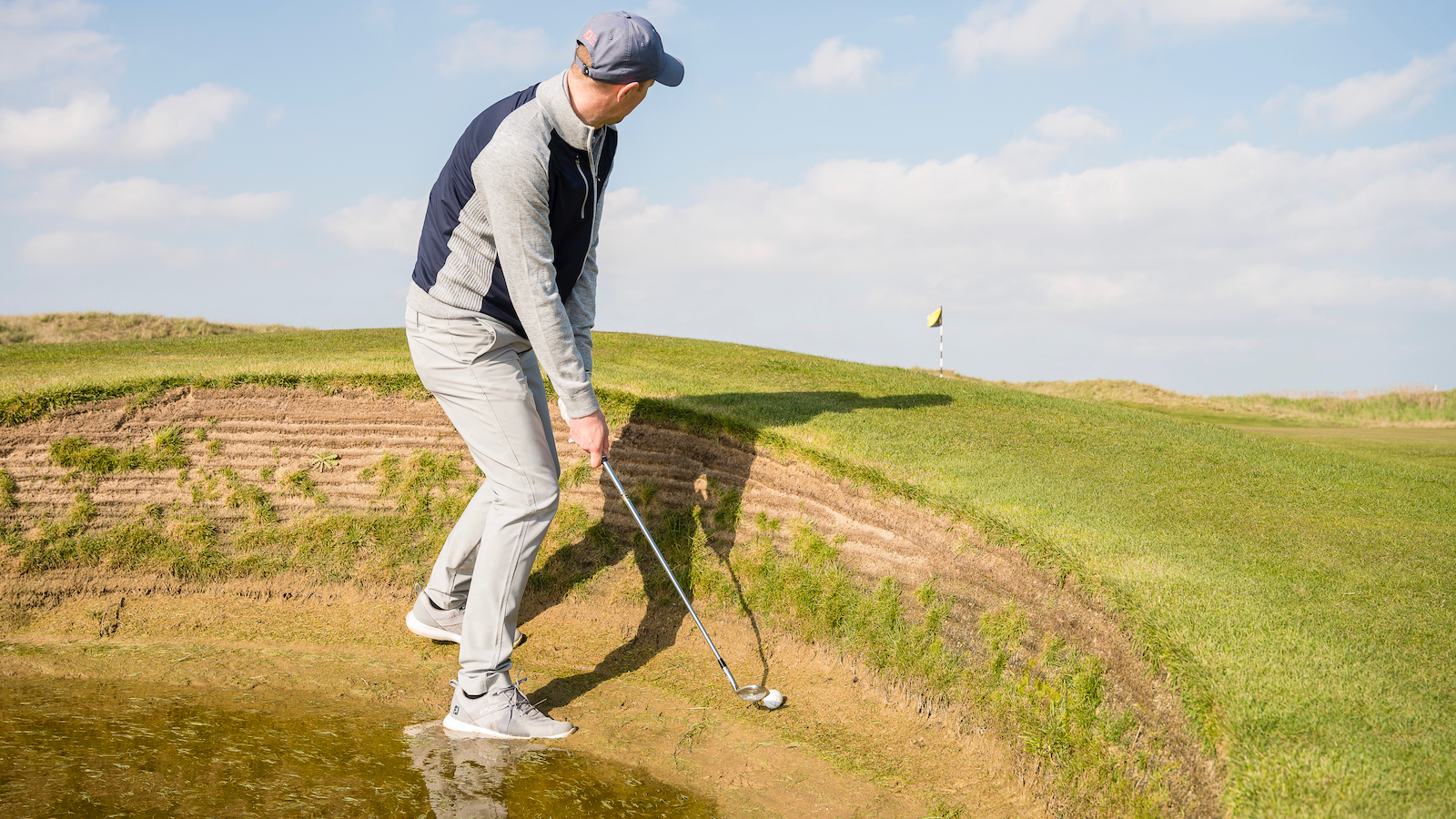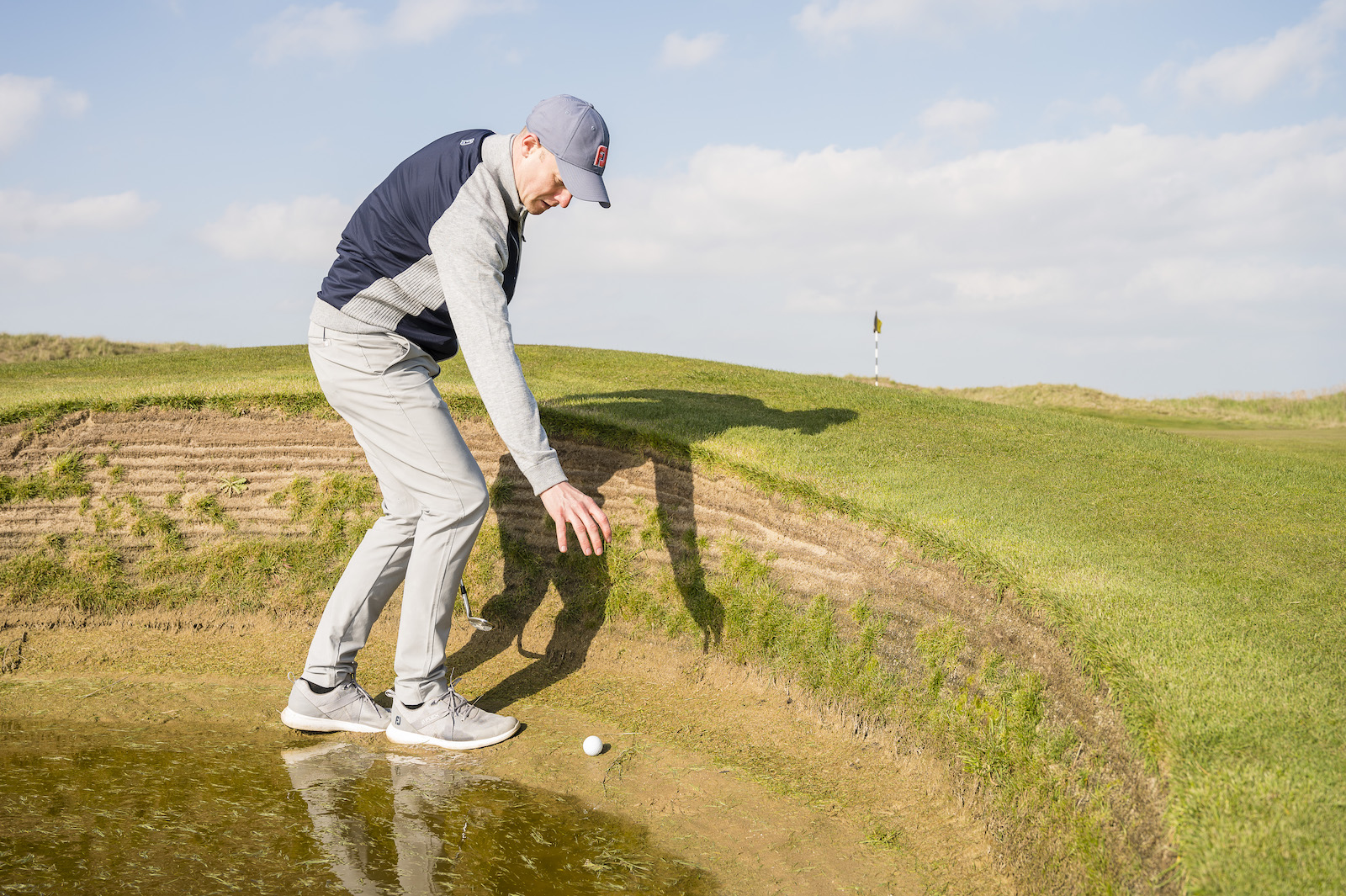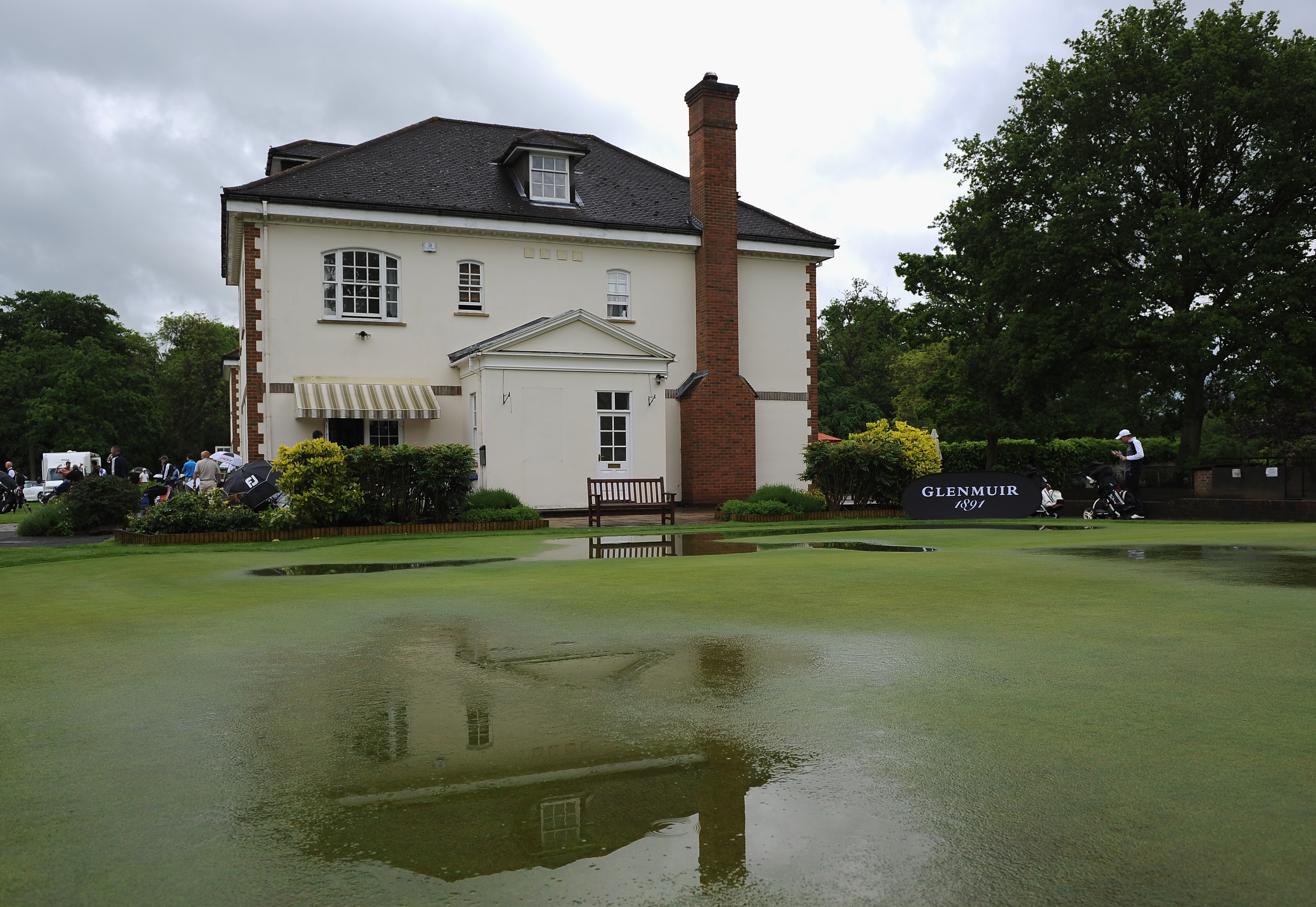
Many golfers know that when taking relief from an abnormal course condition, you must take complete relief such that the condition you are taking relief from no longer interferes in any way with the lie of your ball or the area of your intended stance or swing.
For example, if you decide to take relief when your ball is on a cart path, you must ensure that you’ve taken complete relief, so that not only is your ball no longer on the path, but also neither are your feet, and it is clear that your club won’t strike the path during your swing either on your takeaway or follow-through.
There are, however, some circumstances where the Rules allow you to take 'maximum available relief' in bunkers or on the putting green when complete relief is not available within those specific areas of the golf course. This option is permitted when you are seeking to take free relief from an abnormal course condition in those two areas of the course (a bunker or a putting green), typically from an accumulation of temporary water, but it could also be an animal hole, an immovable obstruction or any other ground under repair.

Let’s focus on temporary water and the dreaded flooded bunker! Most golfers will know that if they take relief outside the bunker, it will cost them a penalty stroke. However, free relief is available if they drop inside the bunker, and this is where the ‘maximum available relief’ option could apply.
If a bunker is significantly flooded and there is no nearest point of complete relief in the bunker, you may still take relief under Rule 16.1c by using the point of maximum available relief in the bunker as the reference point. This means that if there is somewhere in the bunker where you could drop that is not nearer the hole, even if your ball or feet would still be in shallower water, you are permitted to use this spot as your reference point to take free relief.

In many cases, players will take this option to save themselves a shot, accepting that their feet might get a little wet in the process. It may even be that you drop the ball in a shallower part of the water but still fancy your chances in your desire to avoid a penalty shot for dropping outside the bunker.
It’s a similar story if your ball lies on the putting green. In addition, free maximum available relief is also permissible here if an abnormal course condition, such as temporary water, intervenes on your line of play (see Rule 16.1d).

If, for example, your ball lies on the putting green and temporary water will always interfere when taking relief, you may again find the nearest point of maximum available relief (not closer to the hole) and place your ball there. This point could be either on the putting green or in the general area.
It’s worth noting, however, that if your ball lies on the fringe or fairway and you’re hoping to putt, you won’t get relief for temporary water simply on your line of play – only if it interferes with the lie of your ball or area of intended stance or swing. The line of play element only comes into play if your ball is lying on the putting green.







